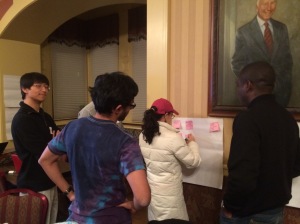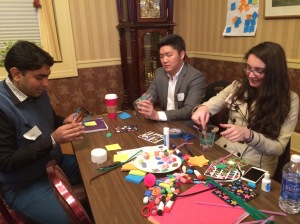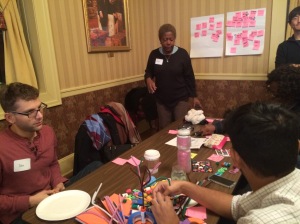

When Amitabh Bachchan launched to fame in the 80’s he brought with him a new character type, the angry young man. To my experience, the angry young man wears bell-bottoms, was possibly wronged in some way/ experienced some deep childhood tragedy, and spends his young adult life being angry and wanting vengeance. But the angry man can also have a sea change, learn the errors of his ways, or channel his anger towards something beautiful and productive (like trying to save his dying friend). I thought about this stereotype this morning, after I had a night’s sleep to digest Kai Po Che.
I thought a lot about the main character, Ishaan. He shares the spotlight with the other two guys, but I think he stood out as the most accurate embodiment the new Indian leading male. 12 pack abs, chiseled good looks, and a lot of rage. He is markedly different from the other two, and I think is shown to be more ideal. Govind is just the sweet nerdy business guy, and Omi is easily influenced by… everything. But again Ishaan stands out for his passion and yes, his anger. Ultimately Ishaan is portrayed as a good guy, but I think I look at him through a very different lens. For the first half of the film, and some of the second half, Ishaan is not really that nice. He breaks people’s cars (to be fair it took about 15 minutes for my Hindi skills to kick in so maybe he had a good reason to break this guy’s car, I’ll never know), pushes little kids, and physically abuses his sister when she tried to have a heart to heart with him. But all of this seems to be justified because he is training the next Indian cricket star.
I think I found the way he treated his sister to be the most disturbing. In the movie no one really stands up for the way he pulls her hair, and even worse, she forgives him when he barely apologizes. This is the new archetype of the angry young man. The new angry young doesn’t seem to have some traumatic past and has no problem using a lot of violence to achieve his ends. I thought about the new slew of movies which glorify violence, as long as the person’s heart is more or less in the right place. Movies like Rowdy Rathore, Dabangg, and every movie Ajay Devgan has been in recently highlight this violent Indian male who are justified by their cheesy one liners and good intentions.
I’m struggling to understand why these men are the new heroes. Why is this the male we all want? I remember a time when Bollywood leading men were not really like this. I mean way back, back to the nineties (ok, not that far back). While there was still a lot of fighting in the cinemas, the leads were somehow a lot kinder. Think Salman Khan as Prem in Hum Aapke Hain Kaun, or the Sharukh from DDLJ. Neither of these guys were angry fighters.1
Maybe I’m biased. I think of this character in light of the violence I see around me, and in light of the ongoing violence towards Indian women. The perpetuation of male violence justified as “oh, well boys are going to be boys” or “boys just have too much passion” is a dangerous thing. So maybe Ishaan would have gotten married and treated his wife right, but that seems so so doubtful. My point is we forgive the fact that he’s a huge jerk because of his more or less good intentions. It’s that forgiveness that really bothers me. Just like we forgive Chulbul Pandey or Rowdy. And also in light of the expose on violence against women in Delhi, it makes me question why this is the new pinnacle of masculinity.
To clarify, I did really like this movie. And I cried at the end. And maybe you can’t compare the character of Ishaan to Rowdy as they are in completely different genres. But that angry male image seems to stick to both. In a way maybe Ishaan comes around. After all, he is the ultimate hero of the film. Because even though this guy has major anger management issues, he is passionate and selfless. So why can’t we have a movie where the lead is passionate, selfless, and is not an angry super-jacked young man?2
- Well, on second thought maybe the men of the nineties will still prone to rage, but they also had much more sweeter sensitive side as well which I don’t really see anymore. Exceptions, SRK in RNBDJ. Except we still don’t admire the engineer, we admire that weird guy he transforms into, who wears stunner shades at night.
- Ok, obviously there are exceptions. Like Madhuvan could probably never play a jerk no matter how hard he tried, or the more obvious 3 Idiots Aamir.








